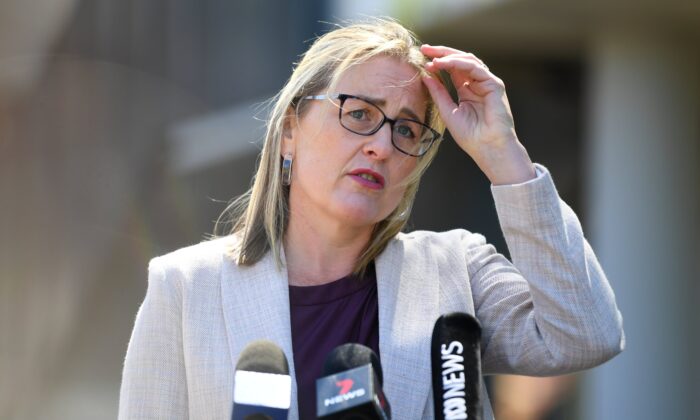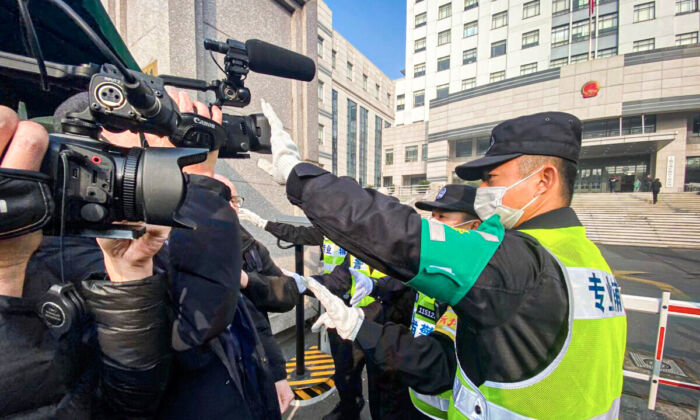Alberta’s environment minister says the province’s dropping emission rates for the past nine years have been due to innovation, not rules. She cited a new national report showing Alberta was one of four provinces that had reduced emissions in the last year.
“Our per-barrel emissions are in decline, electricity emissions are in decline, methane emissions are in decline, all while production and demand continues to rise,” Minister Rebecca Schulz said in a May 3 post on X, formerly Twitter.
“We did it by investing in innovation and technology, not punitive rules and regulations.”
She said the province could be doing more if it had support from the federal government.
“We are a global leader in responsible energy development and could be doing even more if the federal government came to the table,” the environment minister said in an official statement.
“We saw this on May 1, when Alberta’s Capital Power had to stop its Genesee carbon capture and storage project because the project wasn’t economically feasible due to lack of support from Ottawa. The blame for this lies entirely at the Prime Minister’s feet,” Ms. Schulz said.
Edmonton-based Capital Power announced it would discontinue the project because it was not “economically feasible” at this time.
“Capital Power looks forward to exploring CCS [carbon capture and storage] at Genesee and certain assets in our North American fleet in the future as economics improve,” the company said in its first quarter results summary.
Ms. Schulz said that Ottawa has broken funding promises for carbon capture projects and other such technologies, including the Investment Tax Credit for Carbon Capture, Utilization and Storage (CCUS).
“They’ve also broken their promise to expand the Canada Growth Fund’s range of Carbon Contracts for Difference,” she said. “For other provinces, the federal government can, and has, moved quickly to support emissions reduction projects. However, when it comes to Alberta, we get only lip service, delays, and bad policy creating massive investment uncertainty.”
She said that the province was on course to achieve a carbon-neutral economy by 2050 by investing in technologies rather than regulations.
However, Canada’s Environment Minister Steven Guilbeault said the country was on track to reduce emissions largely because of federal regulations.
“Methane emissions are going down in the oil and gas sector. They will need to come down substantially more and they will be coming down substantially more in the coming years because of things like our regulations for the reduction of methane emissions by at least 40 percent by 2025,” he said during a media conference on May 2.
“Canada remains on track to meet our emission reduction goals of 2026 and on track towards 2030. And we’re doing this as our economy rebounds strongly from the global impact of the pandemic,” the minister said.
When asked about federal investment into carbon capture and storage, Mr. Guilbeault said it was not “the be-all and end-all.”
“It will play a role but it won’t fix our climate change problem,” he told reporters.
National Emissions Report
Ms. Schulz’s comments come after the release of the National Inventory Report on May 2, which shows that Alberta’s emissions have dropped since 2015, but it is still one of the top emitters.
Alberta’s emissions have dropped down to 2010 levels, according to the report data.
Emissions have dropped nationally, the report shows, crediting the decline to many factors, including decreased venting in Alberta and Saskatchewan.
Alberta’s switch from fossil fuels like coal, which saw an 81 percent drop, also contributed to a decline in greenhouse gas emissions for the country, the report said.
“Since 2012, efforts in all three major oil and gas producing provinces (Alberta, British Columbia and Saskatchewan) have resulted in decreases in methane emissions intensity. In Alberta, methane intensity decreased by 53 percent while production increased by 31 percent.”
The results show that the Alberta approach is working, Ms. Schulz says.
“Emissions are declining in oil and gas, and we’re seeing major investments in hydrogen, nuclear, geothermal, carbon capture, utilization and storage (CCUS), and other innovative technologies needed for the future,” she said in her official statement.
“Alberta is part of the solution, not the problem. We have the expertise and innovation necessary to meet the rising global energy demands,” she added.
However, the authors say that the increase in oil and gas operations in the province means it still remains a top emitter for Canada.
“Throughout the whole time series, Alberta and Ontario have been the highest-emitting provinces, accounting for 60 percent of Canada’s total emissions in 2022,” the authors wrote, adding the emission pattern for the provinces has gone in different directions since 2005.
“Emissions in Alberta have increased by 19 Mt (7.5 percent) since 2005, primarily because of the expansion of oil and gas operations,” the report says.
While most provinces in Canada have seen a drop in emissions since 2015, Quebec, Manitoba, and Saskatchewan have remained steady, and British Columbia has seen an increase in emissions over the last nine years.














 English (US) ·
English (US) ·  Turkish (TR) ·
Turkish (TR) ·